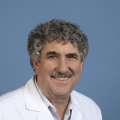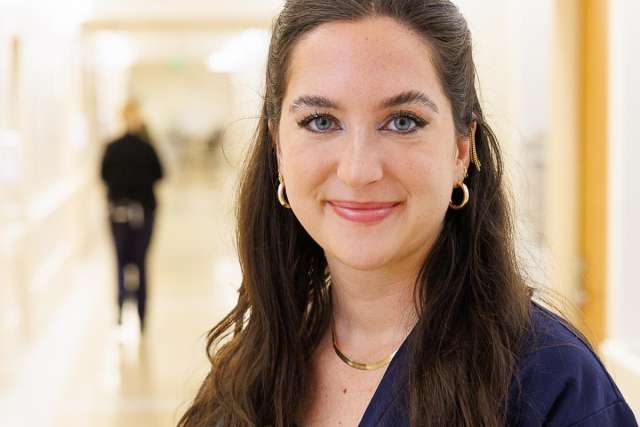If you’re an older adult or have a chronic illness, taking the time to prepare an advance directive will ensure that your medical wishes are followed if one day you can no longer speak for yourself. They’re even a good tool for adults of any age to think about and express their preferences for medical intervention.
The document can be made not only in consultation with your loved ones, but with help from UCLA Health physicians, says Neil Wenger, MD director of the UCLA Health Advance Care Planning Program.
In fact, UCLA Health developed its own form to guide people in determining what they value for quality of life and what type of medical intervention they would want in an emergency or at end-of-life. Additionally, the advance directive form allows people to appoint a health care agent who is legally authorized to make medical decisions for them, if necessary.
“The UCLA advance directive is a pretty special document that we developed with UCLA patients and doctors in mind,” says Dr. Wenger, a professor of internal medicine at the David Geffen School of Medicine at UCLA.
In the following Q&A, he explains how advance directives work, what goes into them and who should have one.
Why are advance directives important?
Advance directives are important so that people’s goals for medical care are clear and get carried out even if they can’t tell the doctors what they want. It’s particularly important because it indicates what their goals are and how they feel about future health states, like if they were very sick.
It also covers who they would want to make decisions for them if they couldn’t make them themselves.
How does an advance directive help communicate what I want from my doctors?
We really are focused on goals and preferences and future health states, not treatments. If a patient says, ‘I don’t want to be resuscitated’ or ‘I do want to be resuscitated,’ I want to know why. What are they thinking about? Are they thinking about something that happened to a loved one or something they saw in a movie or on TV? I’ll discuss with them why they wrote down what they did in the advance directive. I’ll even give them a scenario or two to make sure I understand what their goal is.
How are they helpful for family members?
It gives family members the direction that they need. What we find is that good conversations around completing an advance directive help a family member make better decisions and be much more comfortable with the process. There are data out there showing that under difficult circumstances when people die, families do far, far better if there has been advanced care planning done.
Who should get one?
We focus on individuals who have either chronic illness or serious illness, or are older. But there’s nothing wrong with doing it at age 40 or 35. When one gets married it’s a really good time to do it.
What goes into UCLA Health’s form?
A typical advance directive asks first who do you want to make decisions for you and then gives you a couple of general choices for future medical care. Both doctors and family members find that these general choices are not all that helpful in making clinical decisions because they’re too broad.
The UCLA advance directive is exactly opposite. The first thing it does is it says, ‘Tell us about your goals and values. Tell us about health states that you don’t want medical care to keep you in, and the things you’re hoping medical care will achieve for you.’ The form also asks about religion and spirituality, if that’s important to you. After that, we know a lot about you and we’re going to use this information to help make decisions throughout the course of your care.
It’s only then that we ask if other decisions are needed, who would we turn to. Who is your health care agent?
What should a health care agent do to prepare for the role?
In every case, it’s absolutely essential that the person who is the health care agent in the future has a conversation with the patient about what they wrote down. It’s very hard to predict what someone would want. Would it be acceptable for someone to end up in a health state where they’re not able to take care of themselves? Many people would say absolutely and others would say not on my life.
What steps are needed when making an advance directive?
This is a completely collaborative process. Sometimes patients will have an advance directive mailed to them or pick one up in the clinic or download one from our website and begin to work on it themselves. They might actually complete the whole thing on their own or with their family member who will make decisions for them if needed. They can actually complete the document either by getting two witnesses or by getting it notarized. Our hope would be they would then take that document into their doctor for a visit and they and their doctor would talk about the document and what they’ve written.
Alternatively, you might read it through and say I don’t know that I feel comfortable with filling this out so you go to your doctor and work on it with them. (Additonally, Dr. Wenger says your doctor may initiate the process with you.)
Optimally, this is a process. I hope that the doctor hands the advance directive to the patient during a visit and says, ‘This is important, we haven’t done it together yet. Take it home and read it through and bring it back and we’re going to discuss it.’ The patient keeps the original and the document gets put into the electronic health record system. Then, periodically, further conversations occur as patients develop new illnesses, get sicker, get better.
Why does it need to be witnessed or notarized?
The advance directive is a durable power of attorney for health care. It is a legal document. It doesn’t require a lawyer and it shouldn’t cost anything unless you pay $15 to get it notarized. California law makes room for decisions to be made toward the end of life that reflect patient wishes. It allows doctors to turn to health care agents to make decisions that patients want.
End-of-life is a common time for there to be a lot of high emotion. Sometimes family members don’t agree and have different perspectives on what should happen with a patient. It’s far less likely to occur if you have an advance directive. It’s the doctor’s responsibility to follow the patient’s wishes, even over the wishes of a family member.
Do doctors have time for helping with this process?
They actually get paid for the time and they’re expected to spend the time to engage. In general, you can actually bill insurance for this conversation if you have a real conversation. These should be real conversations.
What if I don’t have a family member to serve as a health agent? Do I really need someone?
If you don’t have someone, decision making is not as good under those circumstances. Doctors end up needing to make assumptions. Frequently, one gets the default medical care, which is always to do more.
For a lot of people, when you spend time discussing with them what they would want, it becomes clear to them a neighbor, a friend or a co-worker could actually serve as the perfect decision maker. (Dr. Wenger says in one case, an older man without family said he’d discussed his view on medical intervention often with his landlord.) If we hadn’t done the advance directive, there’s no way we would’ve known to call the guy’s landlord.
How often should an advance directive be updated?
We ask our doctors to raise the issue every five years.
What types of conditions call for their own advance directive?
In general, it’s almost a one-size-fits-all because it’s such an open document. (Dr. Wenger notes that Jehovah’s Witnesses who have a preference not to receive blood may wish to fill out an advance directive form provided by their church.)
Can an advance care directive work for a person with dementia?
It’s the perfect document to direct care for someone who has developed dementia, but you need decision-making capacity to complete an advance directive. Once someone has lost decision-making capacity, this window has closed. Something that’s really important to do in people developing signs of very mild dementia, is to take time to complete an advance directive.
What barriers or obstacles exist to completing an advance directive?
It means thinking about the future and maybe some things you don’t really want to think about it. It means considering getting sicker in the future or even thinking about death. Even the process of finding two witnesses or getting it notarized. There are a lot of obstacles to completing an advance directive, which is why we need to make efforts to make sure it occurs.




